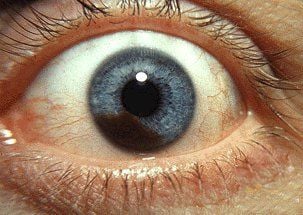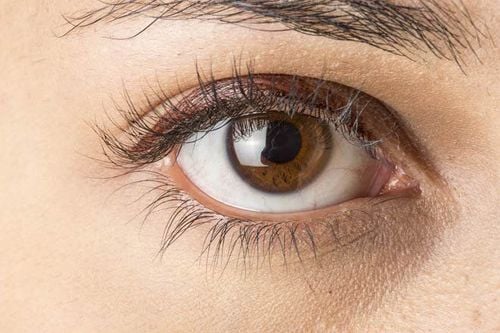This is an automatically translated article.
Malignant eye tumor is a dangerous disease that not only destroys the visual function of the diseased eye but can also be life-threatening. Therefore, it is important to understand what eye cancer is to detect and promptly treat.
1. What is eye cancer?
When the healthy cells in the eye change or change abnormally and grow too quickly in a disorganized manner, there is the possibility of forming a tumor. If the cancer cells come from the eye, it is called intraocular cancer or primary eye cancer. If cancer cells spread to your eye from another part of your body, it's called secondary c.
2. Symptoms of eye cancer
The most common sign of eye cancer is vision changes: not seeing clearly, seeing flashes of light or bright spots (floaters). You may also notice a new dark spot in one eye or a change in the size or shape of the dark spot. Eye cancer is less likely to cause early symptoms, which is why it's important to have an annual eye exam.
3. Melanoma (Uveal Melanoma)
This is the most common primary eye cancer, occurring when cancer cells appear in the uvea (uvea). The uvea divides into three parts: the iris, ciliary body, and the choroid that supplies blood, where cells begin to change and become cancerous.

Hình ảnh ung thư mắt Uveal Melanoma
4. Retinoblastoma
This is the most common type of eye cancer in children, usually found in children before the age of 5. Retinoblastoma begins when the baby is still in the womb. Eye cancer is detected when one of the pupils looks different from the other, often with a white reflection.
5. Intraocular Lymphoma
The lymphatic system is made up of lymph nodes that help remove waste and bacteria. Lymph nodes are part of the immune system found throughout the body, including in the eyes. Intraocular lymphoma is difficult to diagnose because the symptoms are not the same in everyone.
6. Conjunctival malignancy
The lining outside the eyeball and inside the eyelid is called the conjunctiva. Conjunctival melanoma is a rare type of eye malignancy that occurs when a tumor grows in the conjunctival layer. It is important to see a doctor periodically to detect and treat quickly because of the risk of spreading to other parts of the body through the lymphatic system.

U ác tính kết mạc là một trong các loại u mắt ác tính
7. Cancer of the lacrimal gland
Cancer of the lacrimal gland is rare, which begins when a tumor forms in the glands that produce tears. Cancer of the lacrimal gland tends to occur more often in people over the age of 30.
8. Eyelid cancer
Eyelid cancer appears on or inside the eyelid. The most common form is basal cell carcinoma, which usually occurs on the lower eyelids and is exposed to a lot of sun. Eyelid cancer can be effectively treated if detected early.
9. Secondary eye cancer
Secondary eye cancer is cancer that spreads from tumors in other areas of the body, most commonly breast cancer in women and lung cancer in men. Eye cancer can arise from the skin, kidneys, intestines, and thyroid gland.
10. Diagnosing eye cancer
The doctor examines your symptoms and checks your vision and eye movements. The specialist uses a lamp and magnifying glass to look for signs of a tumor in the eye. If eye cancer is suspected, your doctor may recommend imaging with ultrasound or MRI for a closer look. Or perform a biopsy by taking a small amount of tissue to evaluate under a microscope for cancer.

Bác sĩ có thể sử dụng một số phương pháp chẩn đoán u mắt ác tính
11. How is eye cancer treated?
11.1 Surgical Treatment If the tumor is small and not growing quickly and is not causing many problems, the doctor will examine it and monitor it closely. If the tumor is larger than 10mm around or more than 3mm tall, your doctor may recommend surgery to remove part or all of your eye, depending on the extent of the tumor.
11. 2. Radiation therapy Your doctor may use a high-energy beam (usually a type of X-ray) to kill any remaining cancer cells - with or without surgery. However, radiation therapy can also damage healthy cells and can cause dry eyes, loss of eyelashes, or blurred vision.
11.3. Laser therapy The most common type of laser treatment is transpupillary thermotherapy. Laser treatment focuses a narrow beam of infrared light into the eye to shrink a small tumor. Lasers are used to treat malignant eye tumors, because those cells absorb light energy from the laser. Lasers do not work with intraocular lymphoma. Laser therapy usually causes fewer side effects than surgery or radiation.
Once you have a good understanding of eye cancer as well as treatment, patients should see a doctor to be examined to have appropriate indications for their current condition to ensure good health.
Please dial HOTLINE for more information or register for an appointment HERE. Download MyVinmec app to make appointments faster and to manage your bookings easily.













